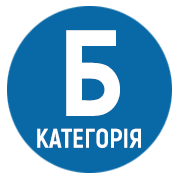BLENDED LEARNING AS AN INNOVATIVE FORM OF TEACHING AND LEARNING AT SCHOOL
DOI:
https://doi.org/10.25128/2415-3605.17.3.19Keywords:
blended learning, e-learning, personalization, mastery-based learning, blended learning modelsAbstract
In the paper the theoretical background of blended learning is examined, traditional brick-and-mortar and blended learning are compared, the advantages of blended learning are outlined and it effectiveness in foreign language teaching is proven. The topicality of this research is determined by the prospect of implementing the blended learning models to achieve the goals set by the National Strategy for the Development of Education in Ukraine for 2012-2021, namely: improving the quality of education on an innovative basis, creating and providing opportunities for implementing various learning models, forms and means of getting education. In this context, a modern educational institution is required to set up a combination of traditional and innovative forms of learning, and constantly update its information and communication resources, which cause the need to introduce the blended learning approach. Blended learning is a relatively new approach in the field of education in Ukraine. The great prospect of blended learning consists in its potential to combine the best of traditional and online practices. This is a formal education program in which pupils learn partially through online learning with some element of self-control over time, place and pace; and partially in a traditional classroom setting. It provides more efficiency and flexibility in comparison with traditional learning as well as online or distance learning. Moreover, blended learning implies a mastery-based approach ensuring that pupils achieve the required level of mastery at the end of the course. It also prepares learners to collaborate in an online environment and meet the demands of the modern labour market. This is particularly important for schools, because modern pupils are tech-savvy and their motivation is determined by the need for autonomy, personalization, communicatively-oriented and mastery-based learning. For the teaching staff, blended learning can improve teaching and class management practices. There are four main blended learning models: Rotation, Flex, A La Carte, and Enriched Virtual. The choice of a blended learning model depends on the discipline, the year level, pupil’s characteristics and learning outcomes, and is based on a learner-centered approach to the learning design. Such combination of classroom training under the guidance of a teacher and independent online learning fosters reflective thinking, facilitates communication and collaboration, increases pupils engagement with the subject, enhances contextual learning, increases flexibility, helps the construction of knowledge through communities of practice, establishes the much-needed authenticity, and promotes learner control.
References
Національна доктрина розвитку освіти України у XXI столітті: проект // Освіта України. – 2001. – № 29. – С. 4–6.
Blended Learning // The Clayton Christensen Institute. – Retrieved from: https://goo.gl/1IpmhL
Bonk C. J. Handbook of blended learning: Global perspectives, local designs / C. J. Bonk, C. R. Graham. – San Francisco, CA: Pfeiffer, 2005. – РР. 3–21. – Retrieved from: http://goo.gl/0LwXKV
Christensen C. Disrupting Class: How Disruptive Innovation Will Change the Way the World Learns / C. Christensen, Horn M., Johnson C. – New York: McGraw-Hill, 2008. – 272 p.
Dziuban Ch. Blended learning: A dangerous idea? / Ch. Dziuban, J. Hartman, P. Moskal // Internet and Higher Education. – 2013. – № 8. – РР. 15–23. – Retrieved from: https://goo.gl/CjojPj
Greenberg B. Blended Learning: Personalizing Education for Students: online course / B. Greenberg, R. Schwartz, M. Horn. – Retrieved from: https://goo.gl/7ZneuO
Kintu M. Blended learning effectiveness: the relationship between student characteristics, design features and outcomes / Mugenyi Justice Kintu, Chang Zhu and Edmond Kagambe // International Journal of Educational Technology in Higher Education. – 2017. – Retrieved from: https://goo.gl/TYE1h6






